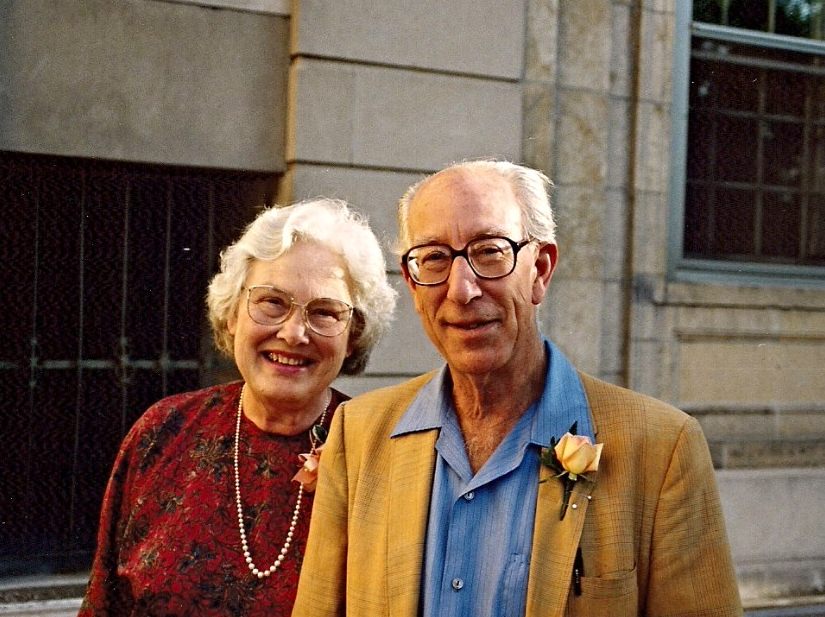by Peter Nyikos
I had the honor of delivering a short eulogy for Mary Ellen at this year’s Spring Topology and Dynamics Conferences (STDC) in Connecticut. It said: “Mary Ellen was a great mathematician. But she was much more than that: she was what Prabir Roy called a guru — someone you could turn to for advice and comfort on all kinds of matters… To those of us who knew her well, she was simply ‘Mary Ellen.’ Whenever set-theoretic topologists got together for a chat, and someone said “Mary Ellen,” 99 times out of a hundred, everyone would know who was being talked about.” I briefly listed some of her main accomplishments, including of course the writing of “Mary Ellen’s booklet” [1]. another expression that usually gets instant recognition. Among her research accomplishments is a beautiful generalization of the Hahn–Mazurkiewicz theorem. It is an immediate corollary of her solution to Nikiel’s Conjecture [3] and of a 1988 theorem of Nikiel [e3]. The Hahn–Mazurkiewicz theorem states that, if a metrizable space is a locally connected continuum (compact, connected space), then it is a continuous image of \( [0, 1] \). (The converse is elementary.) These spaces are called “Peano continua” in recognition of Peano’s space-filling curve. Back in 1966 [e2], Sibe Mardeši wrote: “It is natural to ask for a nonmetric analogue of this theorem….Recently the interest in this and related problems has been revived….” Mary Ellen’s solution to Nikiel’s Conjecture allows one to substitute “monotonically normal” for “metrizable” in the Hahn–Mazurkiewicz theorem. And the proof that every metric space is monotonically normal is essentially identical to the usual proof that every metric space is normal. The search for a natural extension of the Hahn–Mazurkiewicz theorem to compact connected, linearly ordered spaces was akin to the search for a metrization theorem generalizing the Urysohn metrization theorem, and it lasted even longer. (The Bing–Nagata–Smirnov theorem was hailed as the solution to this metrization problem after a search of over three decades.)

I closed my eulogy by expressing the hope that there would be some publications in remembrance of Mary Ellen that would do justice to her greatness, and I am very happy to be able to contribute both to the special issue of Topology and its Applications dedicated to Mary Ellen and to this remembrance. I got a unique taste of Mary Ellen’s graciousness and hospitality in early 1974, when I was a postdoctoral student at the University of Chicago. She invited me up to Madison, where I arrived with a bad cold (I naïvely decided not to postpone the visit, which had already been delayed a number of times), but although it was obvious to everyone, she never mentioned it once and had me stay overnight at her house, where I met her two sons and played board games with them. The same evening she introduced me to the axioms \( \diamond \) and \( \clubsuit \) and to Ostaszewski’s \( S \)-space, all of which were totally new to me at the time. The next two years I saw her at the two STDC conferences, where I became impressed first by her lecturing style and then by the high regard in which she was held. There was a panel discussion in Memphis about the future of point-set topology, and the panel included Mary Ellen and other leading figures such as R. H.Bing, R. D. Anderson, A. H. Stone, and E. Michael.
Her paper on her screenable Dowker space [2] solved a 1955 problem of Nagami whether every normal, screenable space is paracompact [e1]. The proof of normality was a tour de force, amazing in its originality. I had never seen anything remotely like it, nor the way she was able to use the intricate set-theoretic axiom \( \diamond^{++} \) to define the space itself. To this day I have no idea how it entered into her mind that a peculiar space like this would have all the properties required to solve Nagami’s problem nor how she was able to decide on the way to use \( \diamond^{++} \) in the definition. One part of her paper reminded me of an anecdote that was told about a session in the Laramie workshop. She had been going over a particularly intricate construction when F. Burton Jones interrupted: “What allows you to say that?” Mary Ellen replied, “Why that’s — that’s just God-given.” “Yes,” Jones is supposed to have said, “but what did God say when he gave it to you?”

There were some problems in set-theoretic topology which Mary Ellen could not solve but on which she did obtain large “consolation prizes.” One such prize was her screenable Dowker space, an offshoot of her unsuccessful attempts to solve a problem for which we still have no consistency results: is there a normal space with a \( \sigma \)-disjoint base that is not paracompact? Zoltán Balogh later [e4] came up with one of his “greatest hits”: a ZFC example of a screenable Dowker space. Mary Ellen’s consistent example is, however, the only one known to be collectionwise normal. A recurring theme in Mary Ellen’s research, up to the very end of her life, were two further problems about Dowker spaces: the problem of whether there is a normal, linearly Lindelöf space that is not Lindelöf and the problem of whether there is a normal space with a \( \sigma \)-disjoint base that is not paracompact.